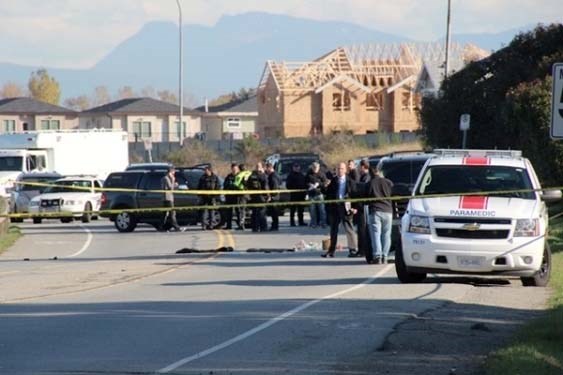The jury in the coroner’s inquest into the 2012 death of a Richmond man following a police standoff has come back with several recommendations for police and the ministries of health and education.
The jury delivered its verdict late Tuesday afternoon after more than a week of testimony from several witnesses in the death of 48-year-old Mehrdad Bayrami.
Bayrami died after he was shot by Delta police Const. Jordan MacWilliams during an armed standoff outside the Starlight Casino in New Westminster.
Following deliberations, the five-person jury came back with several recommendations for the Coroners Service, police services and the ministries of education and health.
Many of the recommendations centre around public awareness and education on mental health, improving access to services and reducing the stigma around mental illness.
The jury recommended that police services in the province create a system to flag and automatically initiate a review of multiple calls or files relating to a single person with the goal of initiating intervention, if needed.
It was also recommended that all police emergency response teams establish a formal agreement with a number of psychologists to support negotiators during incidents.
The jury also recommended that the Ministry of Health create a directory of mental health early intervention services that is available to both medical professionals and the general public; and that the Ministry of Education create a curriculum for kindergarten through to Grade 12 that addresses mental health issues.
The inquest heard last week now Const. MacWilliams was a member of the Municipal Integrated Emergency Response Team (MIERT) at the time and was one a several officers that responded to the call of a domestic disturbance at the Starlight Casino in New Westminster on the morning of Nov. 8, 2012.
Bayrami, 48, was armed with a gun and had briefly taken ex-girlfriend Tetiana Piltsina hostage in the parking lot.
Piltsina testified that, before the incident at the casino, Bayrami was harassing her after they broke up in 2012, but Richmond RCMP didn’t take it seriously, at first.
Piltsina said she was scared and Bayrami was following her everywhere and he even put a GPS tracker in her car, also calling her 60 to 70 times a day.
Piltsina says, finally, a female Richmond Mountie became involved and actually listened.
Before the stand-off began, MacWilliams and two other officers were able to help Piltsina safely get away from Bayrami.
MacWilliams was assigned to the role of lethal overwatch for his team. He was given the responsibility of providing cover for the other officers and to use necessary force if a threat of death or grievous bodily harm was posed. The jury heard, and saw through video evidence, that after several hours of sitting on the ground with the gun pointed at his head or chest, Bayrami got up and began walking around, first in circles but then he began walking towards where MacWilliams and several other officers were positioned.
As Bayrami got closer to police, officers first deployed non-lethal weapons, which included a flash/bang distractionary device and a gun that fires non-lethal rounds. In his role as lethal overwatch, MacWilliams told the jury he was totally focused on what Bayrami’s gun, which had been pointed in the air.
The officer said he saw him begin to bring the weapon down and had it pointing at officers when he fired his weapon, hitting Bayrami.
He was taken to hospital but died 10 days later.
MacWilliams was initially charged with second degree murder following an investigation by the Independent Investigations Office. In July, the Criminal Justice Branch announced it was dropping the charges again the officer. A civil suit launched by Bayrami’s daughter was also dismissed late last year.
The jury heard from a number of witnesses including psychologists who had spoken to police negotiators that morning, several officers who were also part of MIERT at the time and responded to the incident, MacWilliams and Bayrami’s daughter.
A coroner’s inquest is usually required when a death occurs while a person is in police custody and involves a jury of between five and seven people and a presiding coroner. The inquest is not a trial to determine guilt, or find fault, but to determine the facts surrounding a death and allow the jury to make recommendations aimed at preventing deaths under similar circumstances.



